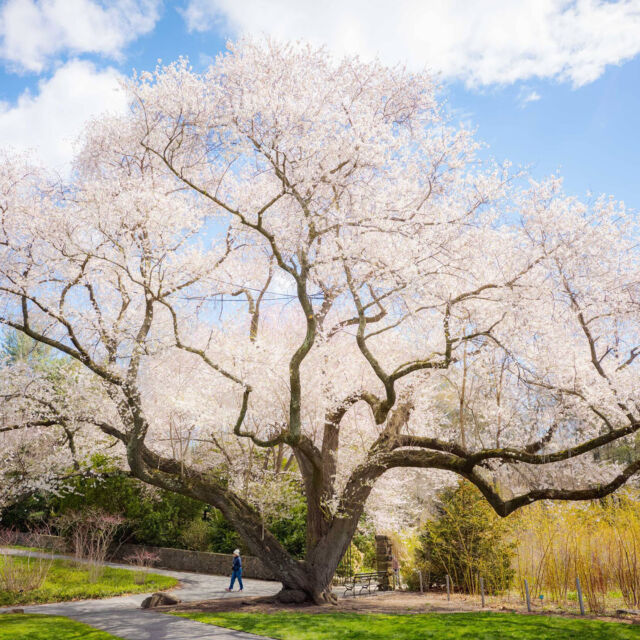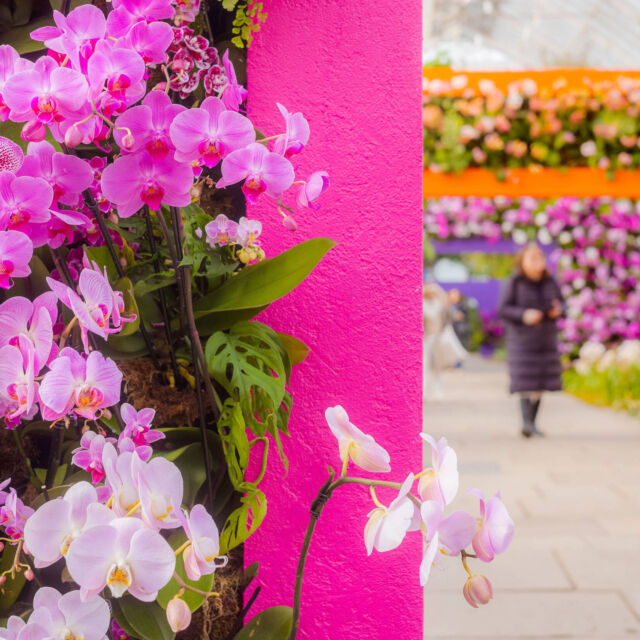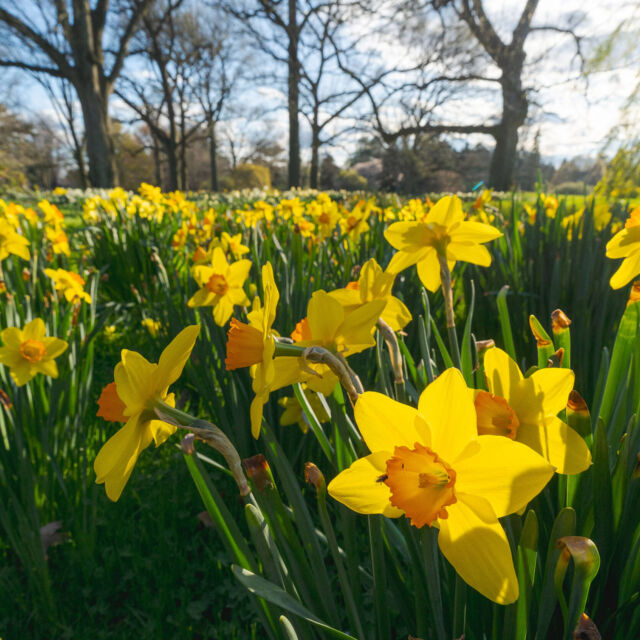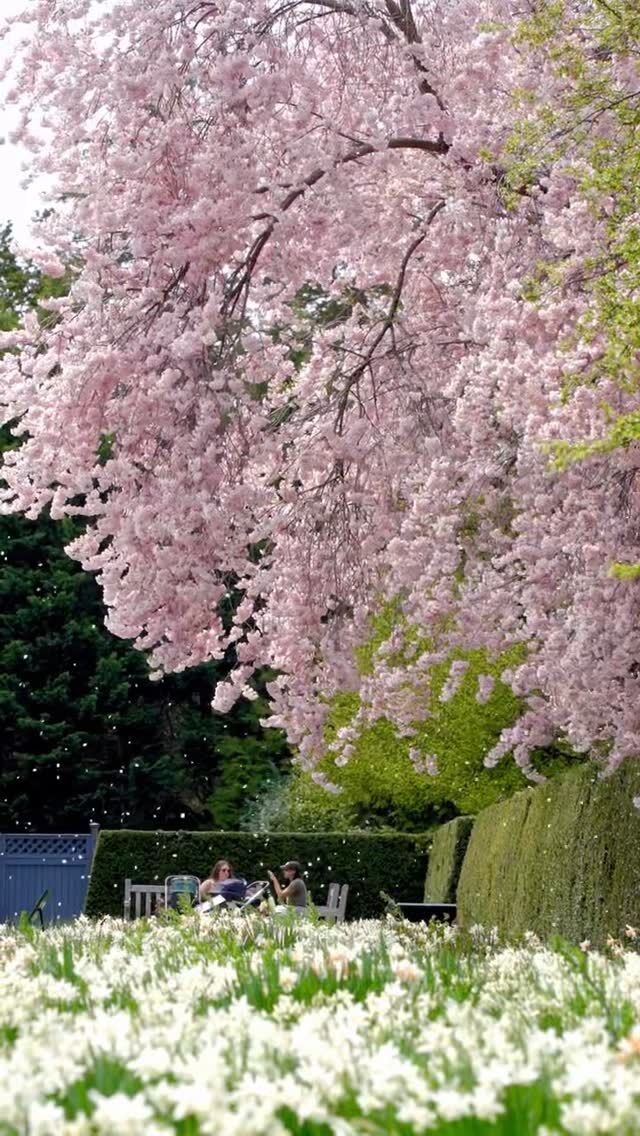How to Be a Phalaenopsis Pro
While orchids are some of the most captivating and strikingly beautiful of flowers, caring for them can be a bit tricky. The orchid family, Orchidaceae, is one of the largest of all flowering plant families, with a diversity of habitats. Successful orchid culture is the result of imitating an orchid’s natural habitat as closely as possible—which can sometimes prove challenging to do. Don’t worry—NYBG has everything you need to know about caring for your own!
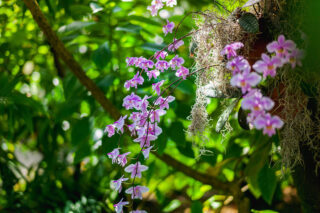
If you’re looking for a good introductory species, start with the genus Phalaenopsis. These are popular indoor orchids that are a bit more forgiving—though as mesmerizing as any. Derived from the Greek words phalaina, or moth, and opsis, or appearance, they are often called “moth orchids.” In their native homes of India, southern China, and Southeast Asia, the Phalaenopsis species are mostly epiphytic plants, meaning they grow above ground, on the surface of another plant. Epiphytes are not parasitic—they do not steal nutrients from the plant that supports them, or host. As epiphytes, orchids have aerial roots and usually grow on trees, drawing moisture and nutrients from the air, rain, and surrounding debris, and getting more exposure to sunlight from above the tree canopy.
But before you start worrying about where you’ll get a tree to grow your orchid on—don’t! As indoor plants, Phalaenopsis orchids—usually hybrids—can grow in containers. They just need a loose, fast-draining medium to grow in (usually bark or moss) and gentle, filtered light.
Phalaenopsis bloom for a prolonged period under proper conditions. Here is a comprehensive guide from our Plant Doctors in the Mertz Library to keep your moth orchid healthy and flowering, and below are several tips to get you started.
- Phalaenopsis requires bright but indirect light.
- Use restraint when watering, but do not let the orchid dry out entirely. It needs to be watered when the potting medium has almost dried out.
- Be careful not to overwater the orchid! Use your finger to test an inch or so down before you water. Moss potting mixture will dry more slowly than bark mix.
- Always water in the morning. Place the plant in a sink and allow tepid water to soak through and drain out completely. Do not let the plant sit in a dish of run-off water. Gently dry any water that has splashed on the leaves or stems to avoid rot.
- Supply extra humidity with humidifiers, or group plants on a gravel-lined tray that is filled with water to increase air moisture through evaporation. You can use a simple hygrometer to assess the humidity and keep it in the 65%+ range that Phalaenopsis prefers.
- Most orchids need a distinct fluctuation between day and night temperatures to successfully produce flowers. Warm-growing orchids such as Phalaenopsis prefer day temperatures between 65 and 85°F., with night temperatures between 55 and 60°F.
- To encourage flowering, make sure the orchid has adequate light, proper watering, temperature, and humidity levels. You can encourage flowering with temperature differences between day and night—such as in autumn, when lowering night temperature for several weeks to 55 – 60ºF can help to initiate flowering. Increasing the light that the orchid receives is another way to trigger flowering. Raising the humidity level encourages flowering.
- Since orchid potting mediums are not composed of nutritious garden soil, the rule of thumb for orchid feeding is “feed weakly, weekly”. Generally, a balanced, powdered fertilizer (20-20-20) is best, at ¼ of the recommended strength on the label, every time or every other time you water. It’s important to flush the plant out with water once a month to get rid of any residue salts left over from the fertilizer. Continue feeding year-round.
- Repot every two to three years as needed with a bark based orchid potting mixture.
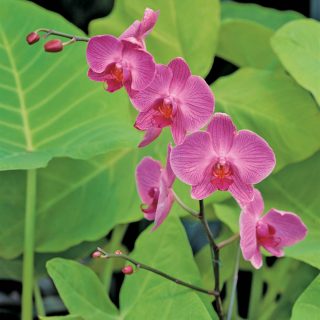
Phalaenopsis were part of the “Orchidelirium”—when orchids arrived in the United Kingdom after being shipped from overseas, their arrival spurred an orchid collecting craze among Victorians. Because of their ultra-particular cultivation and high demand, orchid prices skyrocketed, and the flower became a sign of prosperity and aristocracy. Special orchid hunters were sent to find rare varieties in the wild and bring them to collectors for their private greenhouses.
Today, with the more efficient and inexpensive methods of propagation, orchids are much more accessible—and don’t require royal treatment—though they do need some TLC! With so many species—and more being discovered every day—and our vast resources at NYBG, orchid cultivation can be a breeze. Learn more about moth orchids here.
And if you’re looking to dive even deeper, our Plant Studio: Orchid Design course is perfect for you. You’ll learn to create stunning orchid arrangements with flexible coursework, guidance from plant professionals, and online learning, anywhere, any time. Orchids don’t have to be daunting—NYBG has you covered so you can be a Phalaenopsis pro in no time!
SUBSCRIBE
Enter your email address to subscribe to this blog and receive updates on new posts.
